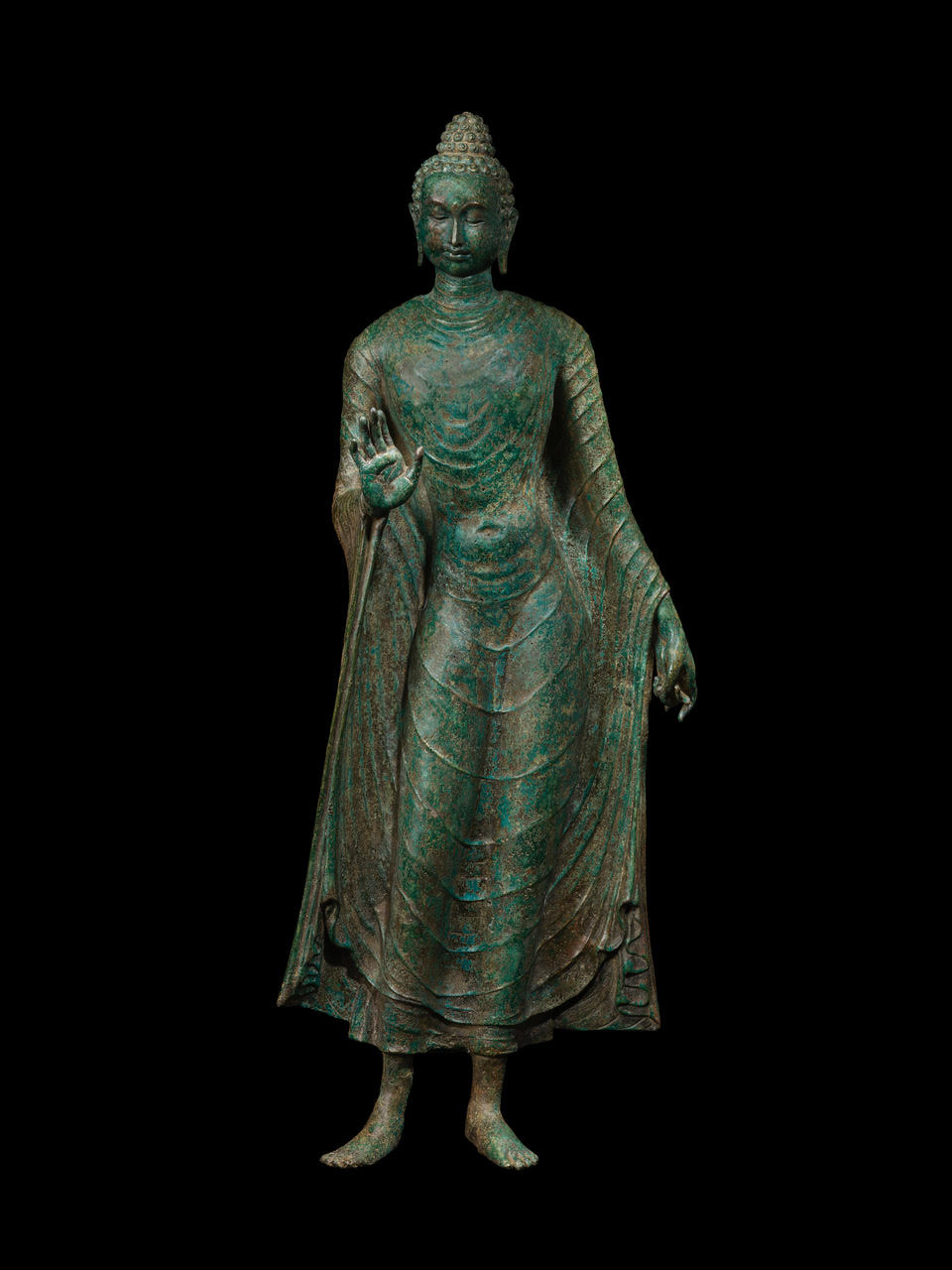
Martin Goodson
Standing Buddha, 7/9th Century from Sumatra or Southern Thailand
Images of Truth
The symbolism of the standing Buddha raises the question: If there is no ‘I’, then who am I doing this practice for?

Standing Buddha. Southeast Asia, Sumatra or Southern Thailand (Srivijaya). 7th to 9th century.
John Eskenazi
Standing Buddha
Southeast Asia, Sumatra or Southern Thailand (Srivijaya)
7th to 9th century
Bronze
Height 56cm
Buddha statues in the meditation hall of a temple will be depicted in seated meditation. In the shrine room, where the morning chanting services take place, they are standing. Iconographically this is significant as a standing Buddha represents active compassion in the world. The chanting service, which is held each morning, is dedicated to the welfare of all beings past and present. The transfer of merit benefits those beings who are, as yet, unborn and thus in this way monks are reminded that their practice is for the benefit of all. This is the only way in which it can be justified, it otherwise too easily falls back into ‘my training for my enlightenment’.
As Master Gensha once said: “Everywhere I go, I hear talk of saving all sentient beings. But what will you do if you meet one who is blind, deaf and mute? He cannot hear your sermon, ask you a question or even interpret your gesticulations? And yet, if you fail to save him, you are worthless!”




